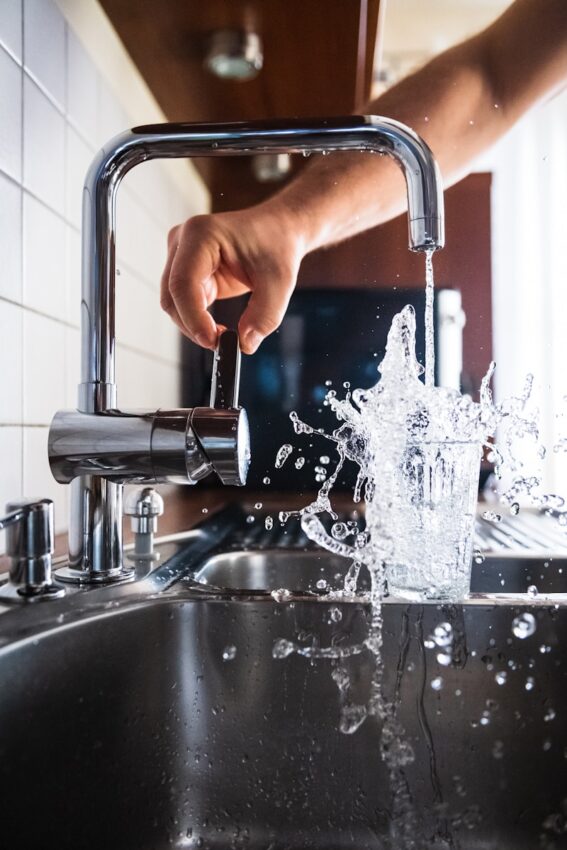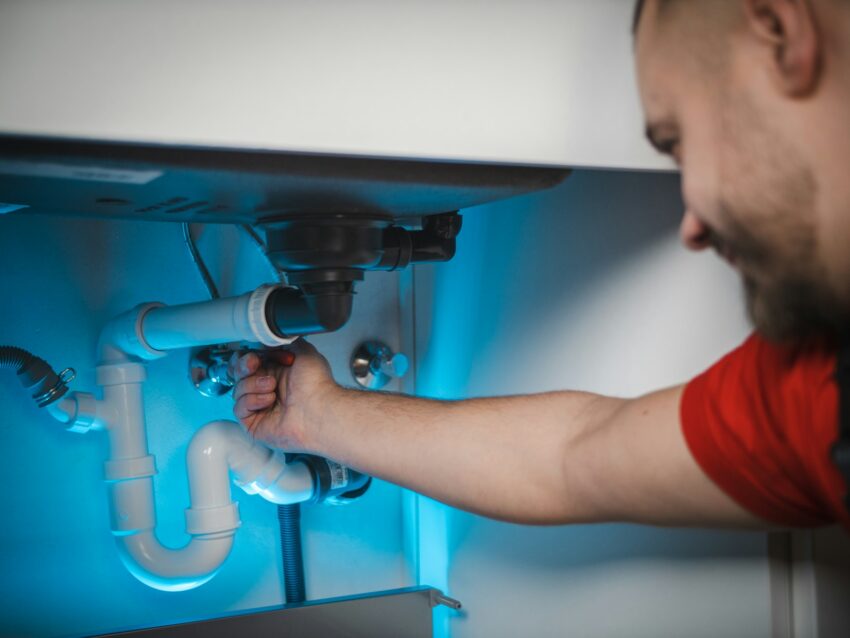No one likes plumbing problems, but most aren’t as challenging as they seem; they are inevitable in most instances. Common issues like dripping faucets and leaking pipes usually lead to water wastage and high utility bills.

Fortunately, many plumbing issues are reasonably straightforward to diagnose and solve when the proper knowledge and instruments come into play. The following six tips will help solve these issues, whether it is a low water pressure issue or a clog that refuses to budge to keep your household plumbing system running smoothly and efficiently:
Clogged Drains
Obstructed water pathways may cause draining problems and odors, which can worsen over time. Blockages are most commonly caused by grease, food matter, and accumulation of hair particles. Most clogs in sinks and showers can be temporarily relieved using a plunger or baking soda combined with vinegar and topped off with hot water. Clogs that are further down may require a drain snake or an auger.
Another method is using plungers or chemical cleaners. However, keep in mind that overusing chemicals can lead to pipe damage, and forceful plugging may cause cracks or breakage. You can also consider hydro jetting in difficult situations. This advantage technique relies on high-pressure water to clear even the toughest clogs and remove years of buildup within your pipes. To prevent future clogs, use drain screens to catch debris and avoid pouring oil or sticky substances down the drain.

Running Toilet
A running toilet might waste hundreds of gallons daily, increasing your water bill immensely. Usually, this occurs due to a faulty flapper, fill valve or flush handle. Check the stated parts for the cause. The solution is often replacing the flapper or adjusting the chain. If it persists after you replace the parts, it may be caused by mineral buildup in the fill valve. The fill valve may have to be replaced or cleaned. These parts will allow your toilet to operate effectively once it is kept well.
Low Water Pressure
Low water pressure makes the simple tasks of taking a shower and washing dishes much like a chore. This is often the case with buildup in your aerator and showerhead; these fixtures must be removed and soaked in vinegar to help dissolve minerals. There could also be some leakage in the pipes supplying your water.
The problem of very low water pressure may also indicate other serious problems concerning one ruptured pipe or a broken part of the main water line. A plumber can assess this situation easily and recommend necessary repairs to maintain proper water flow.
Dripping Faucets
A bad washer or O-ring can be purchased inexpensively and easily replaced for most dripping faucets. To fix this, turn the water supply off, take the faucet apart, and replace what’s bad. Sometimes, the flaw could be a sign of a deep underlying problem that needs to be fixed by a pro. A total replacement could be significant, especially if the faucets have served you for a long time.
The malfunction might originate in buildup sediment in modern faucets containing ceramic discs. Soaking parts in vinegar will rectify this problem; sometimes, you may use a descaling solution. Preventing measures are efficient in avoiding future drips and making your entire plumbing system more efficient overall.
Leaking Pipes
Leaking pipes are common problems, especially in an old house. The consequences, which may include water damage and mold growth, call for higher utility bills that you may have to deal with when leaks are not dealt with. Other temporary repairs include using pipe tape or epoxy putty to hold the leak until a plumber can get the permanent repair.
Preventive maintenance will save you from leaks. For any exposed pipes, look for wear, rust, or moisture. During winter, ensure you stick to the best habits, such as draining all the outdoor pipes to prevent bursting. Do the same for other plumbing fixtures likely to be exposed to the freezing temperatures. Small issues, when dealt with earlier, can save you from costly repairs and furthers and further damages.
Water Heater Problems
A faulty water heater gives you cold showers besides skyrocketing your utility bills. Common issues arise from the building up of sediment, a ruptured heating element, or a faulty thermostat. Annual cleaning of the tank removes sediment and maintains efficiency. Replacing the malfunctioning part is often the best action, especially if an issue keeps recurring.
Consider upgrading to a newer one that is more energy-efficient. Tankless water heaters will also save space while you enjoy on-demand hot water. Consult a professional plumber to ensure proper installation and compatibility with your home’s plumbing and energy requirements.
Endnote
Many plumbing issues can be solved with a quick fix, while some may require the expertise of a professional. Most of these could have been avoided if regular maintenance had been performed, such as flushing your water heater. Quickly repairing plumbing issues maintains your home’s functionality, safety, and comfort. If you’re ever in doubt, it’s best to call a professional plumber to assist you with the problem.
